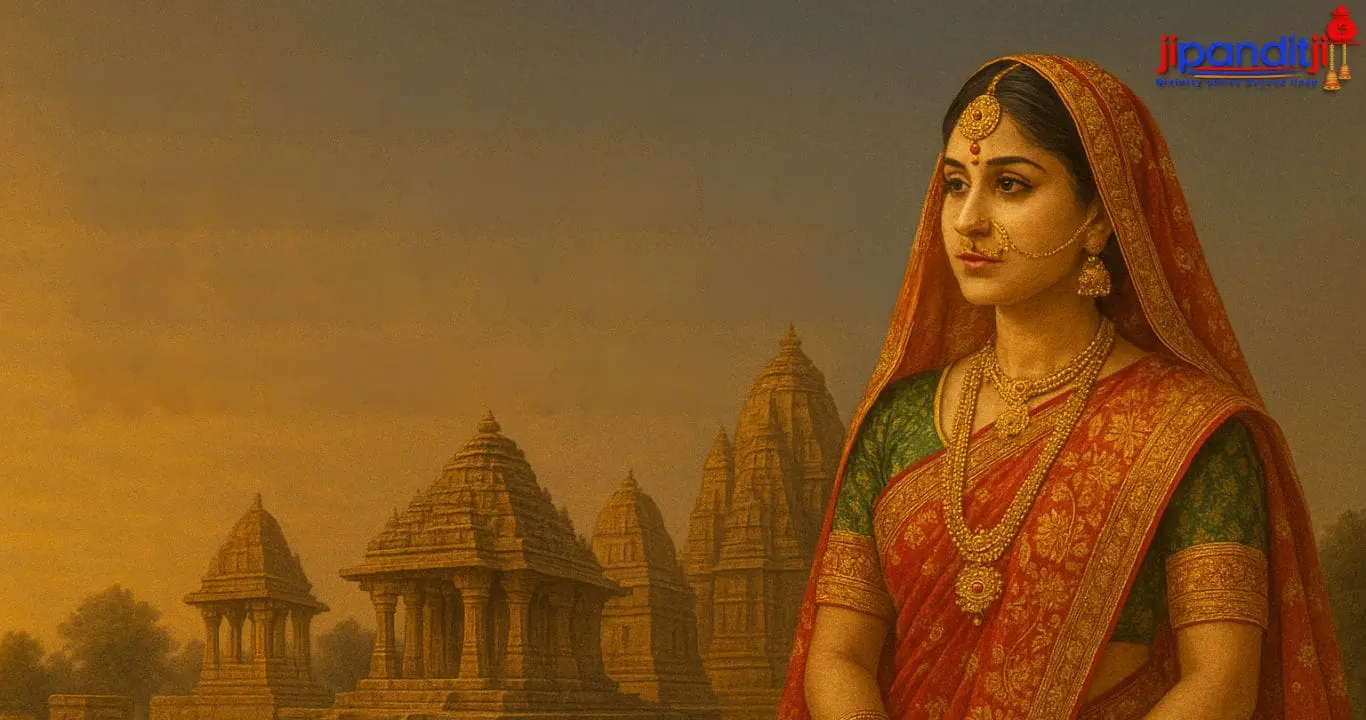7 Ancient Temples That Hold the Keys to Your Transformation

Throughout India’s mystical landscape lie 51 sacred sites known as Shakti Peethas, each representing the divine feminine energy that governs the universe. These hallowed grounds hold immense spiritual significance for women seeking inner transformation, empowerment, and connection with the eternal goddess within. While visiting all 51 sites remains a lifelong aspiration for many devotees, certain Shakti Peethas offer profound experiences that every woman should witness at least once in her lifetime.
These sacred destinations transcend mere religious tourism—they represent powerful energy centers where countless women have discovered their authentic selves, healed emotional wounds, and awakened their dormant spiritual potential. From the snow-capped peaks of Kashmir to the coastal temples of Tamil Nadu, each Shakti Peetha carries unique vibrations that resonate deeply with feminine consciousness.
The Divine Feminine Legacy: Understanding Shakti Peethas
According to ancient Hindu scriptures, Shakti Peethas emerged from the cosmic sacrifice of Goddess Sati, whose body parts fell across the Indian subcontinent when Lord Shiva carried her lifeless form in divine grief. Each location where a body part fell became a sacred site pulsating with goddess energy, creating a network of spiritual powerhouses that continue to attract millions of devotees annually.
Research conducted by the Archaeological Survey of India indicates that these sites have maintained continuous worship traditions for over 2,000 years, making them among the world’s oldest active religious centers. Modern spiritual seekers increasingly recognize these locations as transformative spaces where ancient wisdom meets contemporary needs for feminine empowerment and spiritual growth.
7 Essential Shakti Peethas Every Woman Must Experience
1. Kamakhya Temple, Assam: The Bleeding Goddess
Nestled atop Nilachal Hill in Guwahati, Kamakhya Temple stands as India’s most revered Shakti Peetha. This extraordinary shrine celebrates the goddess’s menstrual cycle, making it profoundly significant for women’s spiritual journeys. Unlike traditional temples featuring deity statues, Kamakhya houses a natural rock formation representing the goddess’s yoni (sacred feminine principle).
The temple’s annual Ambubachi Mela attracts over 500,000 pilgrims, with women comprising approximately 70% of visitors. During this four-day festival, the temple remains closed as devotees believe the goddess undergoes her annual menstruation. This celebration of feminine biology as divine occurrence offers powerful healing for women struggling with body shame or reproductive health issues.
Visitors report experiencing profound emotional releases, increased self-acceptance, and enhanced connection with their feminine essence. The temple’s tantric traditions honor women as living goddesses, providing transformative perspectives on feminine power and sexuality.
2. Vaishno Devi, Jammu & Kashmir: The Mountain Mother
Located in the Trikuta Mountains, Vaishno Devi attracts over 10 million pilgrims annually, making it one of India’s most visited religious sites. The 14-kilometer trek to reach the sacred cave temple represents both physical challenge and spiritual metaphor for life’s journey toward self-realization.
The cave houses three natural rock formations representing the trinity of goddesses: Mahakali, Mahalakshmi, and Mahasaraswati. Women often report experiencing miraculous healings, answered prayers, and profound spiritual visions during their pilgrimage. The challenging mountain path symbolizes overcoming life’s obstacles through divine feminine strength.
Archaeological evidence suggests this site has been worshipped for over 1,000 years, with recent infrastructure developments making the journey more accessible while preserving its spiritual authenticity. Many women describe this pilgrimage as a rite of passage that transforms their relationship with personal power and resilience.
3. Kanyakumari Temple, Tamil Nadu: The Virgin Goddess
At India’s southernmost tip, where three oceans converge, stands the temple of Kanyakumari—the virgin goddess who chose spiritual practice over marriage. This unique Shakti Peetha celebrates celibacy as a path to divine realization, offering inspiration for women seeking spiritual fulfillment beyond traditional societal roles.
The temple’s location creates a natural amphitheater where devotees witness spectacular sunrises and sunsets simultaneously during certain seasons. This cosmic phenomenon mirrors the goddess’s power to unite opposing forces within divine consciousness. Marine biologists note that the confluence creates unique water conditions supporting exceptional biodiversity, symbolically representing the goddess’s life-giving powers.
Women visiting Kanyakumary often experience clarity regarding life purpose, career decisions, and spiritual calling. The goddess’s example of choosing self-realization over conventional expectations resonates particularly strongly with contemporary women navigating similar choices.
4. Kalighat Temple, West Bengal: The Divine Mother of Calcutta
Situated in Kolkata, Kalighat Temple represents urban spirituality where ancient devotion thrives amid modern metropolitan energy. This Shakti Peetha, where the goddess’s toes allegedly fell, attracts diverse devotees seeking protection, justice, and transformation through divine mother’s fierce compassion.
The temple’s association with social reformers like Raja Ram Mohan Roy and spiritual luminaries like Ramakrishna Paramahamsa demonstrates its role in Bengal’s cultural renaissance. Statistical records show that 60% of daily visitors are women, many seeking the goddess’s intervention in family matters, career challenges, and personal protection.
Kalighat’s urban setting offers unique advantages for working women who can integrate spiritual practice into busy schedules. The temple’s 24-hour accessibility and efficient organizational systems make it particularly suitable for contemporary lifestyles while maintaining traditional spiritual intensity.
5. Jwala Devi, Himachal Pradesh: The Eternal Flame
High in the Kangra Valley, Jwala Devi Temple houses eternal flames that have burned continuously for centuries without any apparent fuel source. Geological surveys confirm these natural gas emissions create the perpetual fire, but devotees recognize them as manifestations of the goddess’s undying energy.
This Shakti Peetha, where the goddess’s tongue fell, represents the power of divine speech and truthful communication. Women often visit seeking courage to speak their truth, express authentic opinions, and communicate effectively in challenging situations. The temple’s mountain setting provides natural retreat conditions conducive to introspection and spiritual dialogue.
Scientific studies indicate that the temple’s elevated location and natural gas emissions create unique atmospheric conditions that many visitors find energizing and clarifying. The combination of pristine mountain air and sacred energy creates optimal conditions for meditation and spiritual practice.
6. Ambaji Temple, Gujarat: The Divine Protector
Located in the Aravalli Hills, Ambaji Temple represents the goddess as supreme protector and guide. This Shakti Peetha, traditionally associated with the goddess’s heart, emphasizes emotional healing and spiritual guidance through life’s challenges. The temple’s modern amenities blend seamlessly with ancient traditions, making it accessible to women from all backgrounds.
Ambaji’s reputation for granting devotees’ heartfelt wishes attracts women facing difficult life decisions, relationship challenges, and career transitions. The temple’s structured darshan system processes over 50,000 visitors daily during peak seasons while maintaining spiritual sanctity. Many women report receiving clear guidance through dreams, intuitive insights, or synchronistic events following their visit.
The surrounding hills contain numerous meditation caves and ashrams where women can extend their spiritual practice beyond temple visits. This infrastructure supports deeper engagement with goddess energy through prolonged retreat experiences.
7. Chintpurni Temple, Himachal Pradesh: The Worry-Destroyer
Nestled in the Shivalik Hills, Chintpurni Temple specializes in alleviating devotees’ worries and mental distress. This Shakti Peetha, where the goddess’s forehead fell, particularly resonates with women experiencing anxiety, depression, or overwhelming life stress. The temple’s serene mountain environment naturally supports mental peace and emotional healing.
Clinical studies conducted by nearby medical colleges suggest that pilgrimage experiences at Chintpurni correlate with reduced stress hormone levels and improved mental health outcomes among female visitors. The combination of spiritual practice, mountain air, and community support creates therapeutic conditions that complement traditional mental health approaches.
The temple’s efficient organization and modern facilities accommodate women travelers, including special arrangements for pregnant women and elderly devotees. This accessibility ensures that the goddess’s healing presence remains available to women regardless of physical limitations or life circumstances.
Planning Your Sacred Journey
Successful Shakti Peetha pilgrimages require thoughtful preparation combining practical logistics with spiritual readiness. Women traveling alone should research transportation options, accommodation facilities, and local customs to ensure safe, comfortable experiences. Many temples offer official guesthouses or certified accommodations that provide secure lodging for female pilgrims.
Creating personal intentions before visiting enhances the spiritual impact of these journeys. Women often find that specific prayers, questions, or healing requests receive clearer responses when articulated consciously before temple visits. Maintaining journals during pilgrimage experiences helps capture insights and guidance that emerge through goddess energy encounters.
The Transformative Power of Divine Feminine Energy
Modern neuroscience research suggests that spiritual experiences at sacred sites create measurable changes in brain activity, particularly in regions associated with emotional regulation, intuition, and self-awareness. Women seem particularly responsive to goddess energy environments, possibly due to evolutionary adaptations related to community bonding and intuitive decision-making.
These ancient sites offer contemporary women access to feminine wisdom traditions that mainstream culture often overlooks or undervalues. The goddess archetypes represented at Shakti Peethas provide alternative models of feminine power that transcend limiting social conditioning about women’s roles and capabilities.

